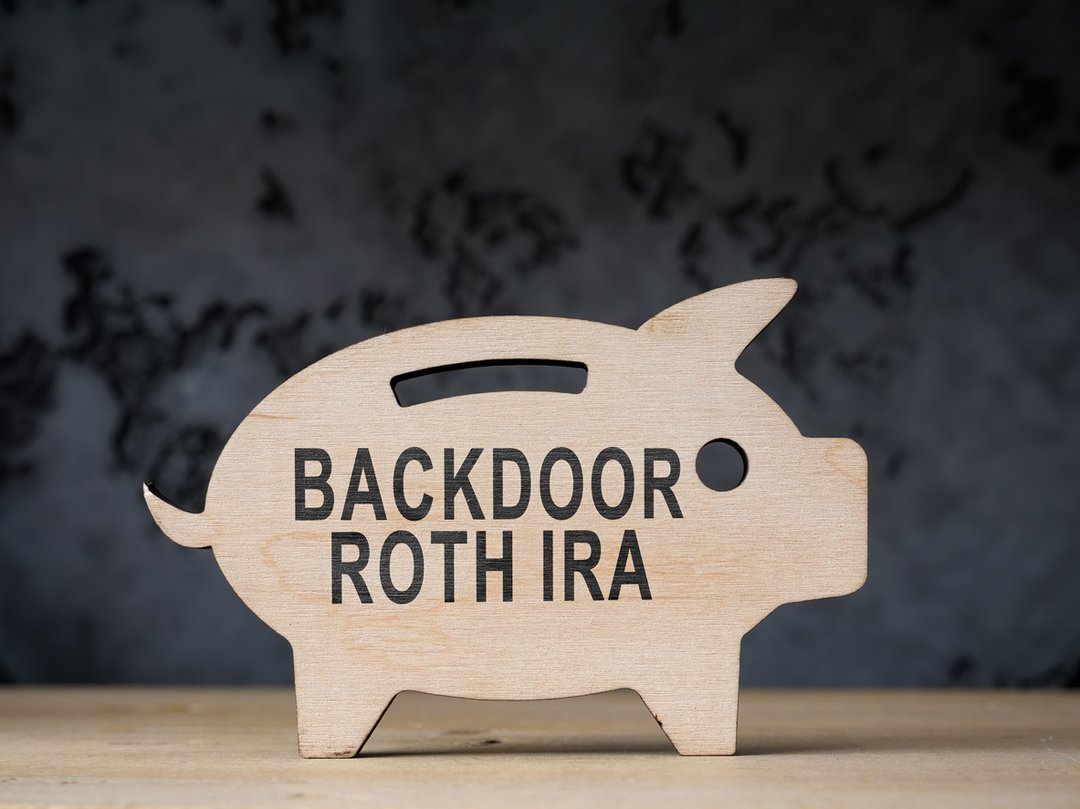
By Neal Templin
May 21, 2024
For the right person, a mega backdoor Roth conversion is the tax equivalent of a free lunch.
Suppose you have $46,000 sitting in a bank account or brokerage account. You will pay taxes on any interest or dividends on your investments.

iStock-1366596206
Now, suppose that same $46,000 is sitting in a Roth account. All gains are tax-free for the rest of your life. And if you leave it to your heirs, all gains will be tax-free for another 10 years after your death.
Here's where the good part comes in: Depending upon your workplace retirement plan, you may be able to move that $46,000 from a taxable bank or brokerage account to a tax-free Roth account without paying any additional taxes.
"It can be very impactful for high-earning couples that can way more than max out their regular Roth contributions," says Mike Piper, a certified public accountant in St. Louis who specializes in tax planning. "The mega backdoor Roth is a huge deal."
Mega backdoor Roth conversions only work for certain people. For starters, your employer must have a Roth 401(k) retirement plan or permit rollovers to a Roth individual retirement plan. That plan has to accept in-plan Roth conversions of after-tax contributions or in-service distributions of after-tax contributions, meaning those dollars can be rolled into a Roth IRA.
Most people are familiar with Roth IRAs. They have been around since 1998 and have strict income limits. If you don't exceed those limits, you can contribute up to $7,000 annually in 2024 or $8,000 if you are over 50 years old.
Roth 401(k)s came later and have no income limits. You can contribute up to $23,000 of your salary to them for 2024 or $30,500 if you are over 50—the same limits as traditional tax-deferred 401(k)s. Most employers now have Roth 401(k)s in addition to traditional 401(k)s, and workers can choose between them.
If your plan permits it, you can make additional after-tax contributions to your Roth 401(k). How much? Well, the IRS says that total contributions to a 401(k) for 2024 can't exceed $69,000. So if you are contributing $23,000 to either a Roth 401(k) or a traditional 401(k), you can kick in another $46,000 in after-tax contributions to your Roth 401(k). If you are over 50, the limit is $76,500 because it includes an additional $7,500 catch-up contribution.
That $69,000 or $76,500 is the limit for total employee and employer contributions. If your company is giving you, say, $10,000 in matching funds, you must reduce the amount you can contribute in after-tax contributions by $10,000. That is hardly a bad thing. The same amount is going into your retirement accounts; it's just that part of it is coming out of your company's pocket, instead of yours.
"That's great having the employer make the contribution instead of you, absolutely," Piper says.
Some retirement plan administrators have set up programs to make mega backdoor Roth conversions easier. If the employer permits it, Fidelity, Vanguard, and Charles Schwab each automatically sweep after-tax contributions every day into the Roth 401(k).
About 11% of the 23,000 work retirement plans that Fidelity manages permit after-tax contributions and in-plan conversions to Roth 401(k)s, says Mike Shamrell, a Fidelity vice president of thought leadership. "2,511 plans have all the pieces in place to do a mega backdoor Roth conversion," he says. That number is up from 1,005 plans in 2019.
Not a lot of employees take advantage of mega backdoor Roth conversions, Shamrell says. Only about 2% of workers in Fidelity-managed retirement plans both contribute to a Roth 401(k) and make after-tax contributions.
Indeed, even if your plan permits them, mega Roth conversions only make sense for certain people. If you need all your salary to live on, you shouldn't be stuffing thousands of additional dollars into a Roth account.
"There's no reason to do this if you're not already maxing out your employee contributions either to a pretax 401(k) or a Roth 401(k)," says Scott Bishop, a CPA and wealth advisor in Houston. "Why add the complexity to your life? Just fully fund the traditional plan first."
However, if you are a highly paid worker and only spend part of your salary, mega Roth conversions make a lot of sense. Instead of your unspent salary ending up in a taxable bank or brokerage account, it is going into a tax-free Roth account.
The same is true of people who have substantial after-tax savings. They can live off these savings, and stick most of their salary into a Roth account. Once again, it is the equivalent of transferring money from a taxable account to a tax-free account.
"This is for somebody who has been able to accumulate cash outside their 401(k)," said Marianela Collado, a CPA and wealth advisor in Plantation, Fla. "Maybe they had an inheritance. Maybe they had a big windfall. For one reason or another, they don't need the salary to keep the lights on."
She goes on. "If you have cash outside your salary, take advantage of this little-known funnel to get it into a tax-free account."
You don't have to stop there, Collado says. If you want, you can do a backdoor Roth in addition to a mega backdoor Roth and stick another $7,000 to $8,000, depending on your age, in the Roth IRA.
Backdoor Roths are used by people who exceed the income limits for Roth IRAs. If you earn $161,000 as a single taxpayer, or $240,000 as a married taxpayer, then you can't contribute directly to a Roth IRA in the 2024 tax year.
In a backdoor Roth, you contribute after-tax money into an IRA and then promptly convert it into a Roth IRA. Since you are contributing after-tax money, you will owe no additional taxes as long as you have no pretax contributions in a traditional IRA. If you do, then a part of the conversion will be taxable.
An over-50 worker could contribute up to $76,500 to a Roth 401(k) and another $8,000 to a Roth IRA—a total of $84,500 per year. Unlike a traditional tax-deferred retirement plan, there are no required minimum distributions from Roth accounts when you hit a certain age. That means you will pay less in income taxes during retirement and less in Medicare premiums, which are based on how much income you have.
In the world of retirement, a mega backdoor Roth conversion amounts to a free lunch—and you want it to be as large as you can comfortably digest.
Write to Neal Templin at neal.templin@barrons.com
This Barron's article was legally licensed by AdvisorStream.
Copyright 2024 Dow Jones & Company, Inc. All Rights Reserved.



